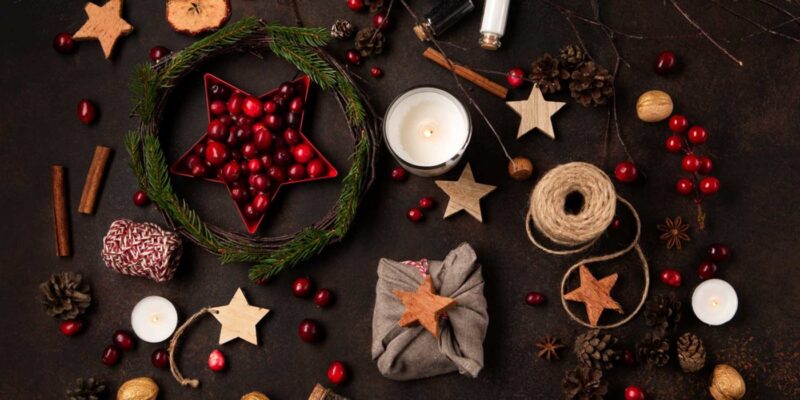Yule, or the Winter Solstice, is when darkness overtakes the light for the last time, and soon, the days will become longer. For this reason, Yule is often referred to as the celebration of the rebirth of the Sun.
It is hard to trace the origins of the feast. Some say it goes back to Egyptian time, through Mesopotamia, and beyond the Middle East. The selection of December 25th as the celebration of the birth of Christ was to coincide with this idea of the rebirth of the sun with the birth of the Son.
There are many other Christian connections to Yule. The sun reborn at Yule is reborn of Mother Earth, the Great Mother. The Son born at Christmas is born of the woman, chosen by God for her great piety and, in many Christian denominations, is the Mother of the Church. The warmth of the reborn sun brings life back to the earth that has gone dormant, and the work of the Son brings new life into the heart of humanity that, for many, has gone cold and dormant.
Back when we grew our food and needed to store it for the winter, Yule was filled with the belief that what was left of the harvest would get us through the rest of the winter until we could hunt and replant the fields. Therefore, part of the celebration of Yule was the feast and food sharing. This was often a scary time to share from one’s stores since one did not know if there would be enough. But share we do; we give gifts to others from our abundance as an expression of trust that God will bless those gifts and the giver.
There are many symbols for this time of year; the most obvious is the evergreen. Outside my window, where I sit to write, are many evergreen bushes and plants. The evergreen shows off life when everything else looks dead, almost standing there defiantly saying that new life is coming soon. The custom of bringing bits of evergreen into the home was to brighten those long, dreary nights and remind us that the earth would quickly be brought back to life. Likewise, the ornaments that decorate your Yule/Christmas tree remind us of this same rebirth.
The wreath we hang on our doors or windows is also a symbol of Yuletide. The wreath is a circle with no beginning and no end symbolizing the circle of life. Traditionally wreaths are made from evergreen to remind us that the spark of life is always present, even in the bleak midwinter. A wreath on your front door symbolizes a welcome to weary travelers seeking shelter from winter’s dark and chilly realm.
The Yule Log is another symbol of this time of year. Traditionally the log would be cut from the previous year’s Yule tree before it was discarded. That is difficult for those who now use artificial trees, but there are some workarounds.
The tree represents life’s survival of death and, by saving a bit of the tree from the previous year, expresses an understanding of life as an eternal circle but does not end with death. Three holes are often drilled in the log for candles that may represent the goddess’s Maiden, Mother, and Crone or, in a Christian context, Father, Son, and Holy Spirit. The candle flame brings light to the room, and the burning of the Yule Long brings warmth to the home.
The Yule Cake or the Buche de Noel achieves the same symbolism. The cake is decorated to look like a log. Candles are added to the cake or placed around it for the same purpose and symbolism as the wood log, and by eating the cake, the essence of the Yule Log, warmth, and the reminder of the coming sun/Son become part of us.
But there is also a spirituality that goes along with Yule. Yule is when we stand within the darkness, knowing deep in our souls that the light will triumph. Yule is also the time for a deep spiritual journey to our interior. It is a time to look at the year that is passing and all that we have done and left undone and rekindle that light within each of us. Yule is the season of birth and renewal of the earth and ourselves.
Regardless of how we celebrate, the idea is to be grateful for all we have and for the knowledge that the sun/Son will soon be reborn/born, and the earth will rejoice.

